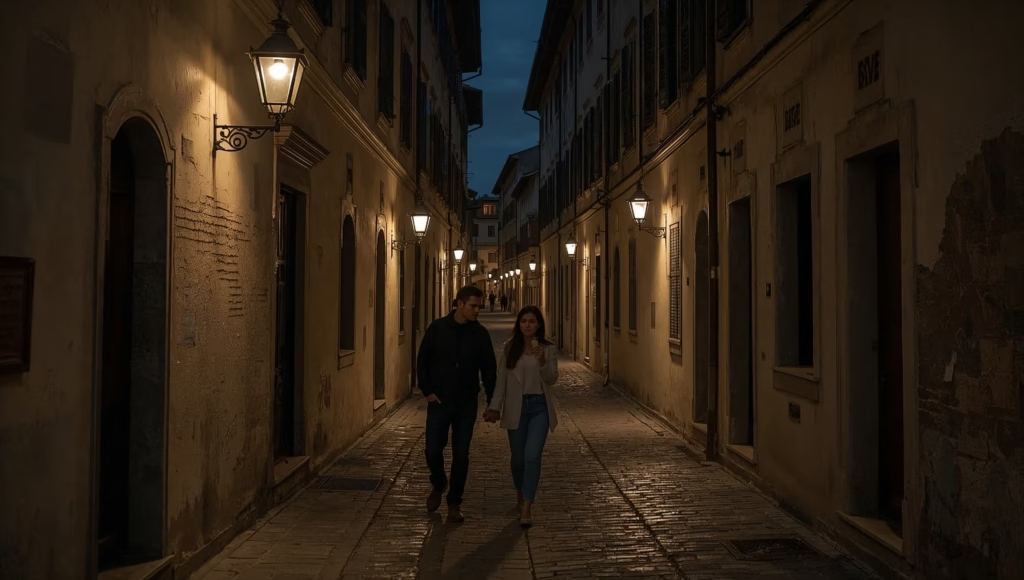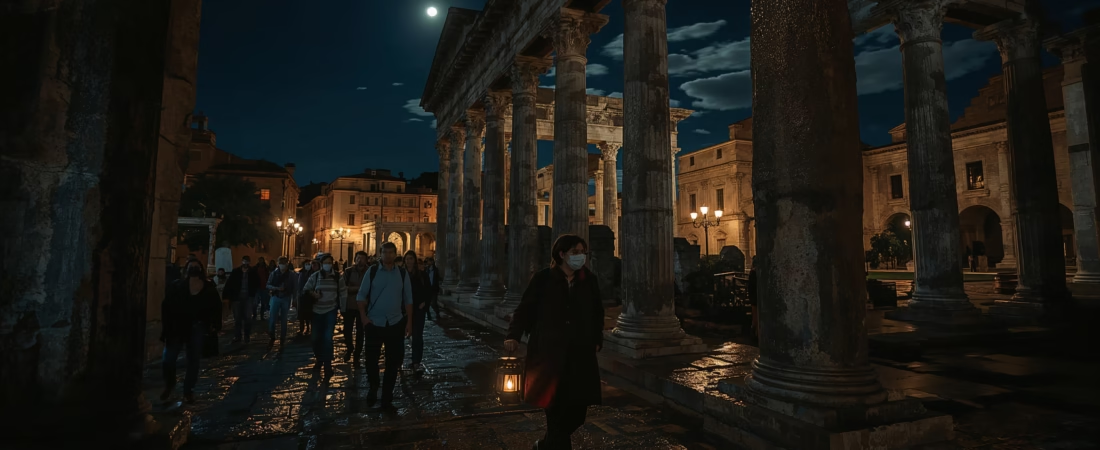In 2025, a new wave of travel is lighting up Italy—not with neon, but with moonlight. Welcome to the world of noctourism, where after-dark cultural experiences are transforming how visitors engage with Italy’s iconic cities and hidden treasures. It’s not about nightlife in the traditional sense; it’s about discovering the magic of Italy when the sun goes down and the streets come alive in a different way.
Whether it’s a moonlit tour of ancient ruins, a nighttime opera in a Roman amphitheater, or a slow stroll through lantern-lit alleys with a gelato in hand, noctourism invites travelers to experience the country at a new tempo—one that’s quieter, deeper, and often more authentic.
What Is Noctourism?
Noctourism refers to cultural and experiential travel activities that take place primarily after sunset. It goes beyond bars and clubs to include evening museum tours, night markets, illuminated archaeological sites, open-air concerts, and guided walks under the stars.
In Italy, noctourism has exploded in popularity for a few key reasons:
- Avoiding daytime crowds and heat, especially in peak summer months
- Creating immersive cultural moments through ambient lighting and storytelling
- Encouraging longer stays as travelers spread activities across the day and night
It’s an ideal solution to overtourism, offering visitors more space and cities more breathing room.

Where It’s Taking Off
While noctourism is expanding across the country, a few standout cities and regions are pioneering the movement:
Rome: Ancient After Dark
Imagine walking through the Roman Forum by torchlight, with a guide whispering stories of Caesar’s last days. The Colosseum, now open for night tours, becomes even more dramatic under floodlights, its arches casting long shadows across the cobblestones.
Add to that rooftop aperitivo tours, midnight Vespa rides, and jazz concerts along the Tiber River, and you’ll find a Rome that feels timeless and thrilling after dark.
Florence: Art in a New Light
Florence’s museums and churches are opening their doors late into the evening during summer months. The Uffizi Gallery offers twilight hours, allowing guests to admire Botticelli’s masterpieces without the daytime crowds. Meanwhile, the Piazza della Signoria hums with music, street performers, and the clink of glasses well past sunset.
Matera & the South: Shadows in the Stones
In Matera, one of the oldest continuously inhabited cities in the world, noctourism is practically spiritual. Its ancient cave dwellings, or Sassi, glow with lanterns and soft lighting, turning the town into a living Nativity scene. Evening storytelling tours explore its deep history in a way that feels both sacred and intimate.
Venice: Silence and Reflection
By day, Venice can feel overwhelmed. But by night, when the cruise ships leave and the alleys quiet down, the city becomes a dream. Night gondola rides, candle-lit dinners by the canals, and hidden walking tours reveal a gentler, more romantic side of La Serenissima.
Experiences That Define Noctourism
Here are just a few examples of popular noctourist experiences in Italy:
- Nighttime food tours in Palermo or Bologna
- Evening winery visits with live acoustic music in Tuscany
- Starlit hikes in Cinque Terre’s national parks
- Moonlight yoga and meditation on Sicilian beaches
- Nocturnal wildlife tours in Umbria and Abruzzo
- Outdoor cinema nights in medieval piazzas
The focus is always on cultural immersion, sensory richness, and sustainable timing.
Who Is It For?
Noctourism is catching on with a broad spectrum of travelers:
- Couples seeking romantic, uncrowded settings
- Solo travelers looking for peaceful ways to explore
- Families who want flexible schedules that avoid heat and fatigue
- Older travelers who appreciate slower pacing and reduced walking stress
- Photographers chasing dramatic nightscapes and soft light
It’s also a favorite for repeat visitors—people who’ve “done Italy” by day and are now looking for something deeper.
Sustainability and Local Impact
Noctourism isn’t just a win for visitors—it benefits locals too. By spreading tourism over longer hours, cities reduce pressure on public infrastructure and create more jobs in hospitality, arts, and transport.
Plus, nighttime experiences are often more mindful. There’s less noise, less waste, and a stronger emphasis on storytelling, art, and connection. Many tours are led by local historians, musicians, or artists who share their neighborhoods from a personal perspective.
Tips for Your Own Noctourist Adventure
- Book ahead: Evening slots are limited and often sell out
- Dress appropriately: Even summer nights can get cool, especially near water
- Bring a small flashlight: For walking tours in dimly lit areas
- Consider guided options: They add context and ensure safety
- Pair with daytime rest: Enjoy a lazy morning or siesta before heading out
Final Thoughts: A Different Kind of Light
Italy is stunning under the sun—but something changes when the day fades. Colors deepen. Crowds thin. The pace slows, and the sounds of footsteps, laughter, and distant music take over. In the glow of lamplight and moonbeam, even familiar places feel reborn.
Noctourism isn’t a trend—it’s a shift in how we relate to place and time. It invites us to travel with intention, to slow down, and to let the night tell its story.
So next time you plan your Italian escape, don’t just ask what you’ll see. Ask when.
Explore curated nighttime tours, cultural events, and hidden gems across Italy with VexoItaly.com.
